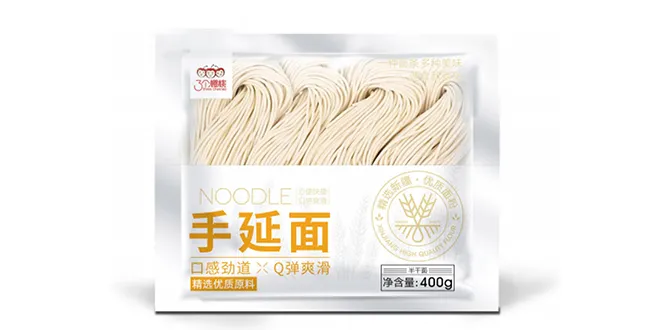soba pasta
Exploring the Delights of Soba Pasta A Culinary Journey
Soba pasta, a traditional Japanese noodle, has gained widespread popularity beyond its cultural roots, captivating culinary enthusiasts worldwide. Made primarily from buckwheat flour, these slender, earthy noodles are not only a staple in Japanese cuisine but also a nutritious alternative to traditional wheat-based pastas. Their unique flavor profile and versatility in various dishes make them a delightful ingredient to explore in the kitchen.
The Nutritional Benefits of Soba
One of the most appealing aspects of soba pasta is its nutritional value. Buckwheat is naturally gluten-free, making soba a fantastic option for those with gluten sensitivities or celiac disease. It is high in protein, containing all nine essential amino acids, which support muscle growth and repair. Additionally, buckwheat is rich in vitamins, minerals, and antioxidants, contributing to overall health. It contains fiber, which aids digestion, and has a low glycemic index, helping to regulate blood sugar levels. These attributes not only make it a healthier choice but also a satisfying one, as it keeps you feeling full for longer.
Culinary Versatility
Soba pasta's versatility is one of its key selling points. It can be enjoyed hot or cold, making it suitable for a variety of dishes throughout the year. In Japan, it's commonly served as a hot soba soup, where the noodles are cooked and then immersed in a savory broth made from dashi, soy sauce, and mirin. Toppings such as green onions, tempura, or even raw egg can enhance the dish further, creating a comforting meal.
Cold soba, known as zaru soba, is particularly refreshing during the hot summer months. The chilled noodles are typically served on a bamboo mat with a dipping sauce made from soy sauce, mirin, and wasabi. This method of preparation highlights the nutty flavor of buckwheat and provides a light yet satisfying meal.
Beyond traditional dishes, soba pasta can be incorporated into various cuisines. It can be substituted for spaghetti or other pasta varieties in salads, stir-fries, and even buddha bowls. Tossed with vegetables, proteins, and a flavorful sauce, soba becomes a hearty and nutritious meal option. Notable combinations include sesame soba salad, where the noodles are mixed with edamame, carrots, and a sesame-peanut dressing, or soba stir-fry with tofu, bell peppers, and a soy-ginger glaze.
soba pasta

Cooking Soba Tips and Techniques
Cooking soba pasta requires some attention to detail to achieve the perfect texture
. Unlike wheat pasta, soba cooks quickly—usually in around four to six minutes. To prevent it from becoming mushy, it’s important to keep an eye on the cooking time and taste a strand before draining. Once cooked, rinsing the noodles under cold water is crucial, especially if you're preparing a cold dish, as it helps to remove excess starch and stops the cooking process.When serving soba as a hot dish, it can be garnished with a drizzle of sesame oil, a sprinkle of seaweed, or sliced vegetables to enhance the flavor and presentation. For cold versions, fresh herbs like cilantro or mint can add a burst of freshness.
Soba in Modern Cuisine
In recent years, the culinary world has celebrated the fusion of traditional ingredients with modern cooking techniques. Chefs have begun experimenting with soba pasta in innovative ways, incorporating it into gourmet dishes while paying homage to its Japanese heritage. This trend has led to the creation of soba sushi rolls or soba bowls topped with a variety of proteins, fresh vegetables, and creative sauces.
As the demand for healthier, gluten-free options continues to rise, soba pasta is poised to remain a favorite among food lovers. It embodies a perfect balance of nutrition and flavor, making it not just a substitute but a star ingredient in its own right.
Conclusion
In conclusion, soba pasta offers a delicious and healthy alternative to traditional pasta. Its rich history, coupled with its versatility in the kitchen, allows for endless culinary possibilities. Whether you enjoy it in a comforting broth or as part of a vibrant salad, soba is a culinary gem that deserves a special place in your kitchen. Explore the world of soba and let your creativity flourish as you incorporate this unique ingredient into your meals.
-
Is Whole Wheat Pasta Healthy?NewsMay.30,2025
-
Are Soba Noodles Good for Weight Loss?NewsMay.30,2025
-
Are Buckwheat Soba Noodles Healthy?NewsMay.30,2025
-
Are Buckwheat Soba Noodles Gluten Free?NewsMay.30,2025
-
Are Buckwheat Noodles Good for You?NewsMay.30,2025
-
A Healthy Way to Savor Soba and Spicy FlavorsNewsMay.30,2025
-
What Are Lanzhou Noodles?NewsMay.30,2025
Browse qua the following product new the we

















































































































